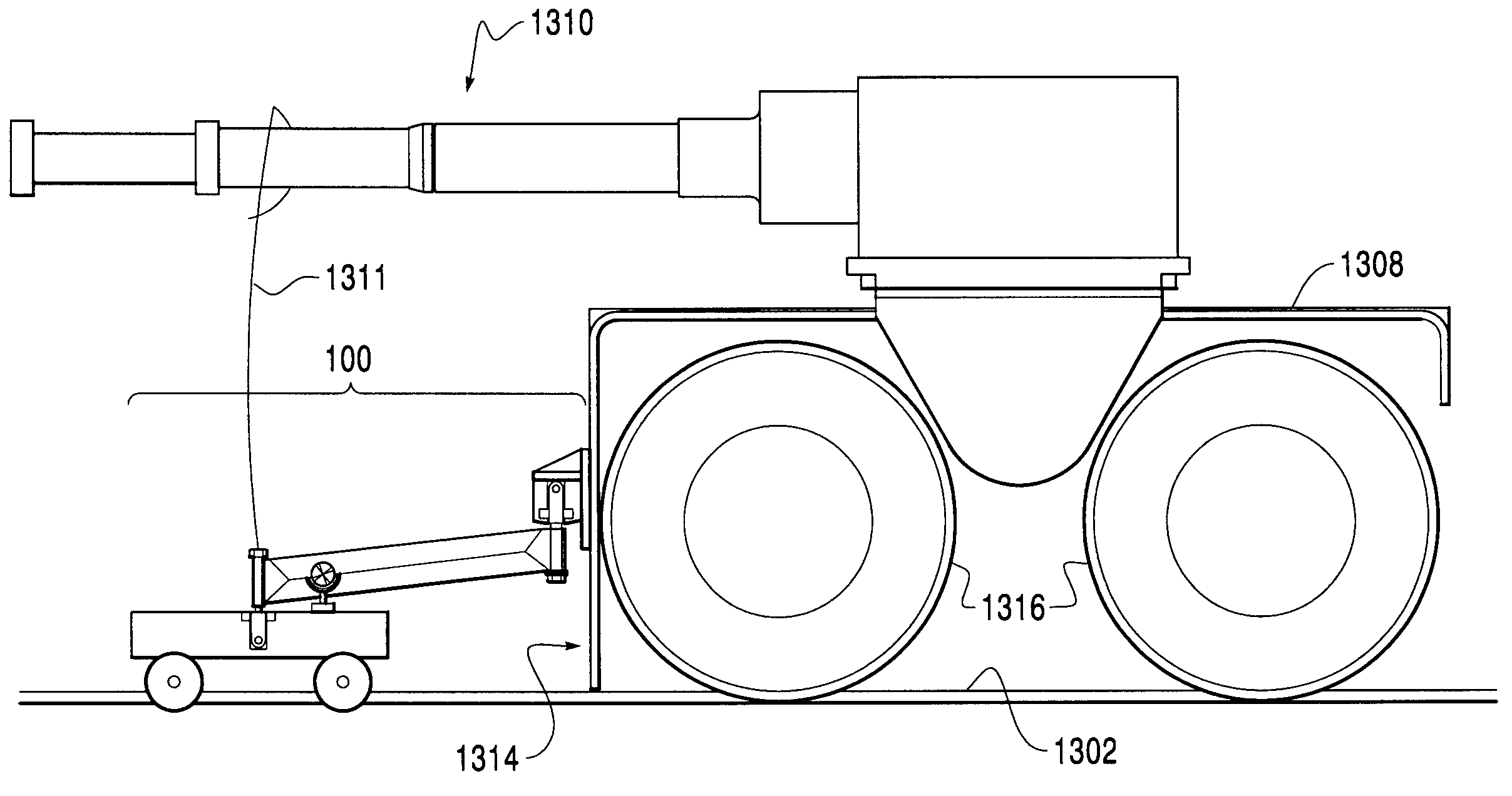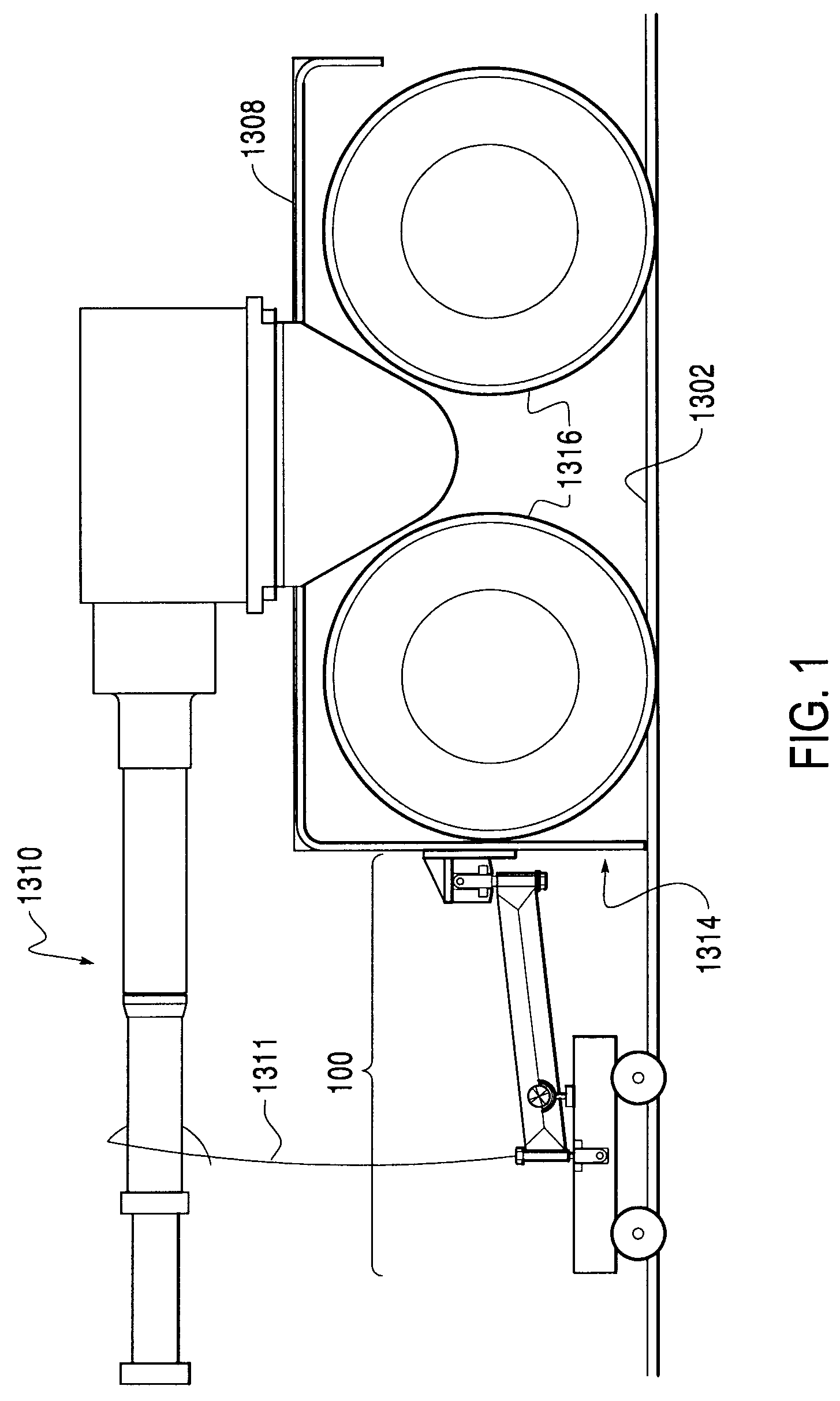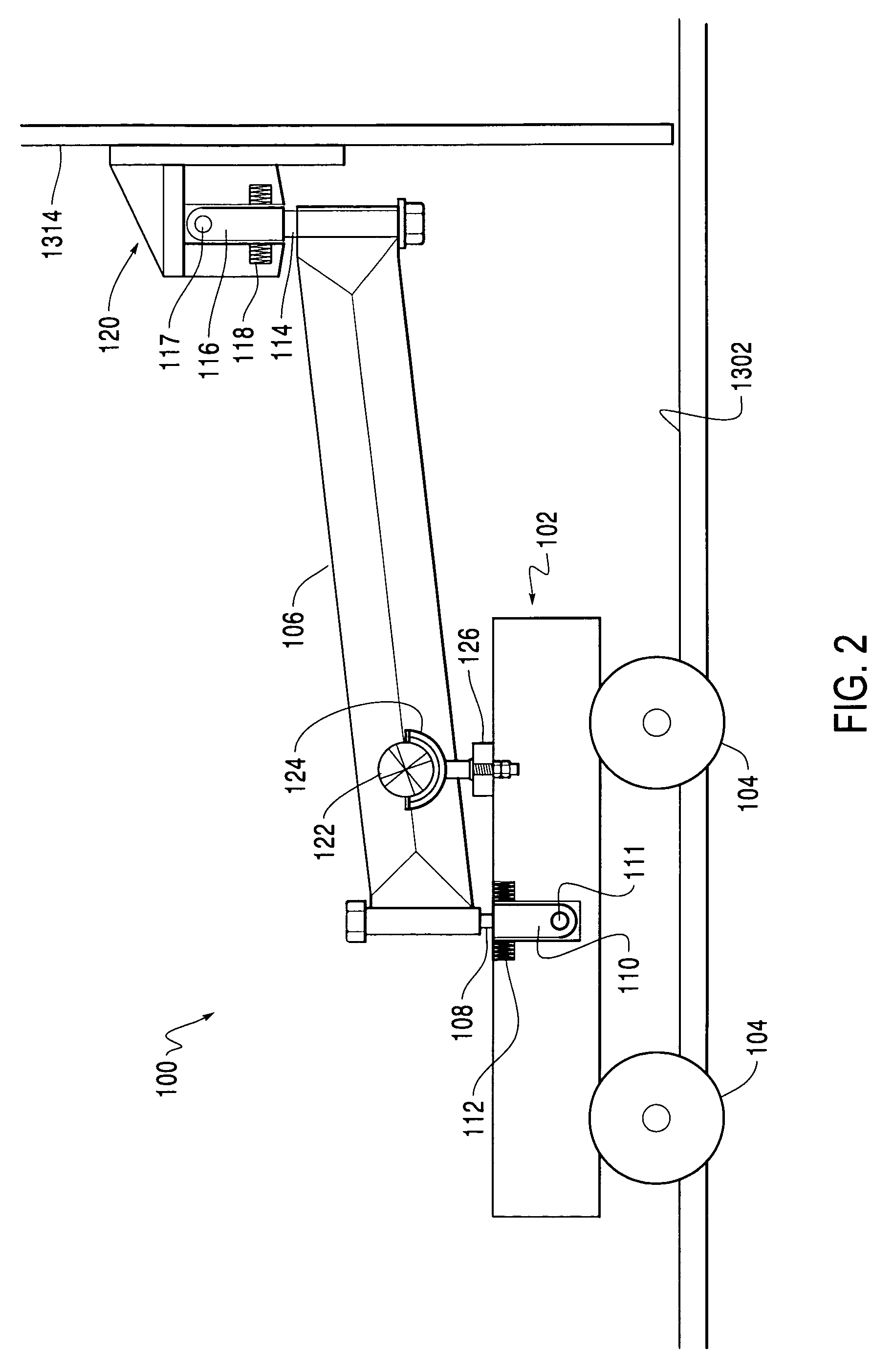Method and apparatus for performing overhead crane rail alignment surveys
a technology of rail alignment and overhead crane, which is applied in the direction of runways, instruments, runways, etc., can solve the problems of crane skew, costly repair, wear and tear of rail and crane wheels, etc., and achieve the effect of improving the speed and accuracy of overhead crane rail survey and improving the safety of survey personnel
- Summary
- Abstract
- Description
- Claims
- Application Information
AI Technical Summary
Benefits of technology
Problems solved by technology
Method used
Image
Examples
Embodiment Construction
[0034]The described rail survey carriage may be used in surveying an overhead crane rail for straightness, span and elevation. Further, the survey information collected may be used to determine whether or not an overhead crane, per se, is skewed at any measurement point. Embodiments of the described rail survey carriage may be used in conjunction with a combination electronic transit (ET) / electronic distance measuring (EDM) device, or ET / EDM device, commonly referred to as a total station, positioned on the loading dock.
[0035]FIG. 12 is a view in schematic perspective of an exemplary portable ET / EDM device 1200 which may be used with exemplary embodiments of the described rail survey carriage described below with respect to FIGS. 1-8.
[0036]As shown in FIG. 12, ET / EDM device 1200 may include an electronic transit 1202, with electronic distance measuring capabilities, mounted on a tripod 1204, and an attached calculating device 1206 with a keypad 1208 and a display 1210.
[0037]An ET / ED...
PUM
 Login to View More
Login to View More Abstract
Description
Claims
Application Information
 Login to View More
Login to View More - R&D
- Intellectual Property
- Life Sciences
- Materials
- Tech Scout
- Unparalleled Data Quality
- Higher Quality Content
- 60% Fewer Hallucinations
Browse by: Latest US Patents, China's latest patents, Technical Efficacy Thesaurus, Application Domain, Technology Topic, Popular Technical Reports.
© 2025 PatSnap. All rights reserved.Legal|Privacy policy|Modern Slavery Act Transparency Statement|Sitemap|About US| Contact US: help@patsnap.com



